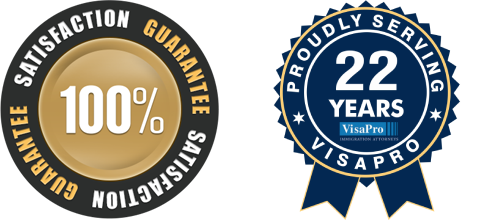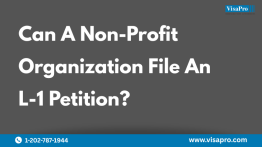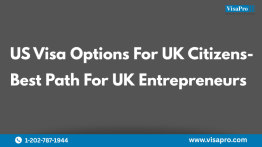Quick Summary:
If you’re leading a lean startup or managing virtual teams across borders, you might wonder whether the EB-1C green card path is truly open to you, or reserved only for traditional corporate hierarchies. The truth is, with proper documentation and strategic planning, founder-CEOs, tech product leaders, and executives in agile organizations can successfully qualify for this employment-based green card category, even without the conventional organizational charts and brick-and-mortar offices.
Understanding EB-1C Eligibility for Modern Business Models
The EB-1C green card provides a direct path to permanent residency for executives and managers transferring from a foreign office to a U.S. affiliate, subsidiary, parent, or branch office. Unlike the EB-2 or EB-3 categories, EB-1C applicants benefit from faster processing times and no requirement for PERM labor certification. For startup founders and tech executives, this represents one of the most strategic immigration pathways available, but only if you understand how USCIS interprets “executive capacity” and “managerial capacity” in the context of lean, modern business structures.
Traditional EB-1C cases typically involve multinational corporations with clear hierarchies, departmental divisions, and dozens of subordinate employees. However, today’s business landscape looks dramatically different. You might be running a SaaS company with contractors in five countries, leading product development with a distributed team of engineers, or managing strategic partnerships through virtual collaboration. The question becomes: can USCIS recognize your leadership role when your organizational chart doesn’t resemble IBM’s?
The answer is yes, with careful planning and thorough documentation. USCIS regulations don’t explicitly require a minimum number of employees or mandate traditional office spaces. What they do require is clear evidence that your role involves genuine executive or managerial duties, that you exercise authority over significant functions or people, and that the U.S. entity has the organizational complexity to support an executive position. For startup founders and tech leaders, meeting these requirements demands a strategic approach to entity structuring, documentation, and petition preparation.
Defining Executive and Managerial Capacity in Startup Environments
Executive capacity means you primarily manage the organization or a major component or function, establish goals and policies, exercise wide latitude in discretionary decision-making, and receive only general supervision from higher-level executives, the board of directors, or shareholders. Managerial capacity involves supervising and controlling the work of professional employees, managing an essential function, or having authority to hire and fire or recommend personnel actions.
Executive vs. Managerial Capacity: Key Differences
| Aspect | Executive Capacity | Managerial Capacity |
|---|---|---|
| Primary Focus | Managing the organization or major component/function | Supervising professional employees or essential functions |
| Decision Authority | Wide latitude in discretionary decisions; sets goals and policies | Authority over personnel actions and work assignments |
| Supervision Received | Only general oversight from board/shareholders | Reports to higher-level executive |
| Startup Example | Founder-CEO setting product strategy and market direction | VP Engineering managing team of senior developers |
| Key Indicator | Controls “what” the company does | Controls “how” work gets done |
In a lean startup, executive capacity might look like setting the product roadmap for your entire platform, making strategic decisions about market positioning and capital deployment, negotiating partnership agreements that determine company direction, or overseeing multiple functional departments even if each has only two or three team members. You’re not writing code yourself, you’re deciding which features align with business strategy, which markets to enter, and how to allocate limited resources for maximum impact.
Managerial capacity in tech environments often involves overseeing professional-level employees (software engineers, data scientists, product managers) rather than supervising large teams of administrative staff. If you manage five senior engineers who each lead specific product modules, you’re exercising managerial authority over critical technical functions. If you oversee the marketing function with two specialists reporting to you, and marketing represents a core business activity, that demonstrates qualifying managerial responsibility.
The critical distinction USCIS examines is whether you spend most of your time performing the actual work yourself or directing others who perform that work. A founder-CTO who still codes 40 hours weekly faces challenges qualifying as an executive. However, a founder-CTO who spends 10 hours reviewing architecture decisions, 15 hours in strategic planning meetings, 10 hours managing the engineering team, and 5 hours on code review (not production coding) presents a much stronger executive profile. Document your time allocation carefully, because this becomes central to your petition’s success.
Weekly Time Allocation: Executive vs. Individual Contributor
| Activity Type | Individual Contributor (Weak Case) | Executive Role (Strong Case) |
|---|---|---|
| Strategic Planning & Decision-Making | 5 hours (12%) | 15 hours (35%) |
| Team Management & Supervision | 5 hours (12%) | 12 hours (28%) |
| Client/Partner Negotiations | 2 hours (5%) | 8 hours (19%) |
| Policy Development & Oversight | 1 hour (2%) | 5 hours (12%) |
| Hands-on Technical/Operational Work | 30 hours (69%) | 3 hours (6%) |
| Hands-on Technical/Operational Work | 30 hours (69%) | 3 hours (6%) |
USCIS Requirement: Executive duties must constitute the majority (51%+) of your work time.
Case Scenarios & Practical Tips:
- Scenario A: You founded a product-company abroad, built up remote development and product teams, and now you’re establishing a U.S. subsidiary. You held the top role abroad for 18 months. You’d want to document that you directed, set policy, and had control over hiring/firing.
- Scenario B: You are a tech-product executive abroad in a start-up, you then moved to the U.S. on an H-1B and pivoted to manage U.S./India remote teams for 14 months before filing. You still meet the one-year rule as long as your duties were managerial/executive.
- Scenario C: You are founder-CEO but did most of the product coding, hands-on development and less of directing staff or strategy. That hands-on role may raise issues of whether your role was “primarily managerial/executive” rather than operational.

Building the Right Corporate Structure Between Foreign and U.S. Entities
The EB-1C requires a qualifying relationship between the foreign entity and the U.S. company, they must be parent-subsidiary, branch, or affiliate organizations. For startup founders, establishing this structure correctly from the beginning prevents complications later and strengthens your immigration case significantly.
| Structure Type | Ownership Model | Best For | Key Advantages | Considerations |
|---|---|---|---|---|
| Parent-Subsidiary | Foreign company owns 51%+ of U.S. entity | Most startups and tech companies | Clear qualifying relationship; liability protection; flexible for fundraising | Requires formal corporate separation |
| Subsidiary-Parent | U.S. company owns 51%+ of foreign entity | U.S.-founded companies expanding abroad | Direct control from U.S. base | Less common for foreign founders |
| Affiliates | Common parent owns 51%+ of both entities | Multi-market expansion strategies | Flexibility for multiple markets | More complex to document relationship |
| Branch Office | U.S. operation is extension of foreign entity | Service businesses; consulting firms | Simpler initial setup | Foreign parent liable for U.S. obligations; limited appeal to U.S. investors |
The most straightforward approach involves the foreign company creating a U.S. subsidiary that it owns (typically 51% or more). For example, your London-based fintech startup establishes a Delaware corporation with the UK parent company as the majority shareholder. You then transfer to the U.S. entity in an executive or managerial role. This structure clearly demonstrates the qualifying relationship and provides flexibility for future growth and investment rounds.
Alternatively, if you already have U.S. operations but didn’t structure them with EB-1C in mind, you may need corporate reorganization. Perhaps you initially formed independent U.S. and foreign entities with different ownership structures. Restructuring to create the required parent-subsidiary or affiliate relationship is possible, but you must do this authentically, not as a sham arrangement solely for immigration purposes. The corporate relationship must reflect genuine business integration, shared strategic direction, and real operational coordination.
Branch offices present another option, where the U.S. operation functions as an extension of the foreign entity rather than a separate legal entity. This works well for service businesses and consulting firms but creates potential liability concerns since the foreign parent remains directly responsible for U.S. obligations. Most startups prefer subsidiary structures for liability protection and operational flexibility, especially when considering future fundraising from U.S. investors.
Documentation requirements for the corporate relationship include ownership records (stock certificates, cap tables, shareholder agreements), organizational documents (articles of incorporation, bylaws, operating agreements), and evidence of operational integration (intercompany agreements, consolidated financial reports, shared strategic planning documents). USCIS scrutinizes these relationships carefully to prevent fraud, so authentic business integration matters far more than paper compliance alone.
Redefining “executive/managerial capacity” in lean start-ups & remote environments
“Executive/managerial capacity” means you are primarily responsible for managing the organization or component, not performing the day-to-day tasks; you must have authority over staff or essential functions, even in a start-up or remote team setting.
It’s critical to grasp how immigration authorities interpret these terms, and how to adapt them to modern business models. According to the U.S. Citizenship and Immigration Services (USCIS) policy manual:
- A managerial capacity includes personnel managers (supervising professional or managerial employees) and functional managers (senior level, managing an essential function rather than direct supervision).
- An executive capacity means you direct the management of the organization or major component, establish goals/policies, exercise wide discretion, receive only general supervision.
In start-ups and tech enterprises you may not have large hierarchical teams; you may have virtual staff, contract developers, remote product teams, cross-border offices. Here are ways to map your role:
Practical Tips & Examples:
- If you are the founder-CEO of the U.S. entity and you oversee product strategy, hiring/firing decisions, budget approvals, team structure, even if many team members are contractors or remote, you can document that you exercise discretion, set policy, and supervise professionals.
- If you are a head of product for a global firm, and your role abroad was leading the function of product strategy for remote teams (you did not code features yourself), you can present that as “function manager” managing an essential function (product roadmap, product operations).
- Less strong scenario: if your role abroad was mostly hands-on development with few managerial or strategic duties, you may struggle to show “primarily” managerial/executive. The USCIS may question if you’re just another software engineer with a title. USCIS
Checklist for role documentation:
- Prepare an organizational chart (abroad and U.S.) that shows your position relative to others, highlights your direct/indirect reports.
- Provide job descriptions showing how many hours you spend on managerial/strategic tasks vs operational tasks.
- Show who you hire/fire, who you supervise, who reports to you, who you coach/mentor.
- Show budget, policy-making, resource decision-making if applicable, even if your budget is modest, show you had discretionary authority.
- Show that the staff support you so you are not themselves doing the routine work; you are overseeing that work.
Real-Life Scenario:
- Example 1: Founder of a SaaS start-up abroad, built a remote engineering product team of 12, oversight of hiring, promotions, product direction; U.S. entity is set up, founder continues as CEO overseeing U.S./India operations. Good fit.
- Example 2: Product head at a company abroad that reports to a VP and primarily writes code, even though you lead a team. This may not meet the “managerial/Executive” requirement because you do not set policy or manage the function at senior level.
- Example 3: Head of operations abroad (remote) for a global digital platform, you supervise local country leads, set strategy, allocate budget, this can qualify as “functional manager” or “executive.”
Myth-busting:
- Myth: “If I don’t have a large team of 50+ people, I cannot qualify.” False, the size of team is not determinative. What matters is the nature of your function, your role, and whether you are primarily managing rather than performing.
- Myth: “Because my company is in tech and remote, USCIS will reject.” No. USCIS recognizes remote teams and modern structures, but documentation must clearly reflect your managerial/discretionary role.
- Myth: “As a founder I don’t need subordinate staff to count as manager.” While possible in limited circumstances, if you are the sole staff, USCIS may ask whether you are doing operational work. It’s riskier.
Documenting subordinate structure, management teams and staff in lean start-ups
You must show a credible subordinate structure, whether direct reports or indirect reports, even in lean start-ups with remote teams. It is possible to qualify with small staff, but you must show that you are not doing routine tasks and that you manage others and have decision-making authority.
In large corporations the subordinate structure is obvious: you oversee managers, who oversee professionals, and so on. In a tech start-up, things are flatter. But immigration adjudicators will still ask: What is your role in relation to staff? Are you supervising, setting policy, controlling budget, hiring/firing? The key is you are managing rather than performing. hooyou.com
Actionable Tips & Examples:
- Prepare an organizational chart showing your role and the roles of the people you supervise, even if they are remote. Use job titles like “Senior Developer – USA”, “Product Manager – India”, etc.
- For remote contractors or outsourcing staff: clarify you have authority over them (e.g., you approve work, you hire/firing decisions, you set strategy) and map them as your direct or indirect reports.
- Show via reference letters or internal docs that you give performance evaluations, recommend promotions, grant leave, manage budgets, and set resource allocations.
- Example: You had 3 direct reports (Product Manager, Engineering Lead, QA Lead) and indirectly managed 8-10 remote staff through them. You oversaw recruitment, training, KPIs, budget allocations, this supports a functional manager role.
- Example: You were the only full-time staff but engaged freelancers; you designated them and you made key decisions on hiring/firing, product direction, investment strategy. Again, you can qualify, but you must show you are not simply executing the product roadmap yourself.
Checklist for documenting staff structure:
- Create annotated organizational charts (past and future) for the foreign entity and U.S. entity.
- Provide job descriptions of direct reports and indirect reports, and your oversight role.
- Provide internal memos, performance reviews, HR records showing your managerial/firing/approval authority.
- Provide evidence of budgets you oversaw, strategic plans you set, policies you implemented.
- Show that the staff perform the tasks and you manage supervising, not that you are doing all the work yourself.
Common Pitfall:
If you are the only person doing everything, coding, product design, dev ops, marketing, then USCIS may find you are performing operational work rather than managerial/executive work. You’ll want to demonstrate a transition from hands-on to managerial, or ensure enough staff are relieving you of day-to-day tasks.
The modern tech/start-up model with remote teams and agile product development is compatible with EB-1C, provided you articulate how you lead and manage remotely, set strategy, manage functions, and supervise staff, in short, you fulfil the managerial/executive role.
Remote work, virtual teams and agile methods are now common, and immigration authorities are increasingly familiar with them. What matters is how your role fits into the management/strategy layer. For example, you may manage product operations across 4 continents, set KPIs, hire remote staff, approve budgets, lead investor relations, all of which demonstrate executive/managerial capacity.
Practical Examples & Tips:
- Example: You are CTO of a U.S.-incorporated SaaS start-up. You previously led the foreign entity’s product operations remotely for 20 months, supervised a distributed team, crafted the product-roadmap, managed budgets, and now will lead the U.S. entity’s product division. That is promising.
- Example: You led the U.S. entity’s remote development team but your role abroad was more operational (hands-on dev). In that case you might strengthen by documenting the strategic oversight role you took up once you moved.
- Tip: Use metrics where possible, number of team members, growth of team, budget size, revenue generated, geographies covered, managerial decisions made, to illustrate your leadership role.
- Tip: Describe your remote oversight: you held virtual team meetings, reported to board/investors, hired leads across countries, set key performance metrics and delegated to leads. This helps frame your role beyond coding or product tasks.
- Tip: Clarify how your role is primarily managerial: indicate what percentage of time you spent on management/strategy vs hands-on tasks. Even a 60/40 split (60% managerial) may be sufficient if other staff perform the bulk of operational work. The policy manual emphasizes the “primarily” test.
Checklist for remote/agile model:
- Highlight remote staff led and supervised by you (direct/indirect).
- Provide internal documents (meeting minutes, strategic plans, review memos) that reflect your role.
- Show delegation of operational tasks to others and your oversight of the function rather than doing it yourself.
- Map your role in the U.S. entity: similar or elevated leadership, overseeing the growth of the U.S. business, remote teams, investor relations.
- Demonstrate continuity of leadership from abroad to U.S. (or upgrade).
Addressing Challenges:
- If you used contractors rather than employees, still show you held decision-making authority (hiring, terminating, directing the work, setting deliverables).
- If your org is flat and you don’t have many layers of staff, focus on the functional manager theory: you manage an essential function (product development, tech operations) at senior level, even if you don’t have many direct reports. hooyou.com
- If your role still leans heavily operational, consider restructuring your role (or documenting a planned restructure) so that when you file, you are stepping into a more managerial function.
Strategic Planning for EB-1C as a Founder-CEO
The EB-1C path requires advance planning, ideally starting when you first establish your U.S. presence rather than trying to retrofit your existing structure to meet immigration requirements. As a founder-CEO, you have the advantage of designing your corporate structure, operational processes, and documentation systems with EB-1C eligibility in mind from day one.
- Begin by establishing clear corporate separation between the foreign and U.S. entities while demonstrating their business integration. Keep separate books and records, maintain distinct bank accounts, and document the corporate relationship through written agreements. However, also create evidence of strategic integration: the U.S. entity should implement policies established by the parent organization, coordinate with the foreign entity on major decisions, and participate in consolidated planning and reporting. This balance shows legitimate separate entities that function as parts of an integrated enterprise.
- Hire strategically to support your EB-1C case. While you shouldn’t hire solely for immigration purposes, when you’re choosing between hiring contractors versus employees, or deciding whether to bring on a mid-level manager versus several individual contributors, consider the immigration implications. An organizational structure with at least some direct reports in professional-level positions strengthens your executive case significantly. Similarly, hiring in functional areas (one marketing person, one engineer, one operations person) demonstrates broader organizational complexity than hiring three people in the same function.
- Document everything contemporaneously rather than trying to reconstruct records later. Maintain detailed calendars showing your time allocation, save emails demonstrating strategic decision-making, retain board presentations and strategic planning documents, and keep records of significant business decisions and their outcomes. When you negotiate a major partnership, draft a memo to the file explaining the strategic reasoning and your role in the decision. When you establish a new policy or procedure, document it formally. This creates a rich evidentiary record that makes petition preparation much easier.
- Consider timing strategically. The EB-1C requires that you have worked for the foreign entity in an executive or managerial capacity for at least one year within the three years preceding the petition. For startup founders, this typically isn’t a concern as you’ve been leading your company since inception. However, if you’re planning to establish U.S. operations, time your launch to allow for adequate business development before filing the green card petition. While you can pursue EB-1C without L-1A from the outset, the U.S. entity must also have been doing business for at least 1 year and should have demonstrated revenue, staffing, and growth which will help present a stronger case
Working with Immigration Counsel to Optimize Your EB-1C Strategy
The EB-1C process is technically complex and stakes are high, your ability to live and work permanently in the United States depends on getting this right. While online resources provide general guidance, individualized legal strategy from experienced immigration counsel is invaluable for startup founders and executives.
An experienced EB-1C attorney should begin with a comprehensive evaluation of your specific situation: your current immigration status, your role in the foreign entity, the corporate structure, your proposed or existing U.S. operations, staffing, financial position, and timeline needs. They should identify potential issues early, perhaps your current structure needs modification, maybe your role requires repositioning, or your U.S. entity needs stronger financial documentation. Early-stage guidance prevents you from investing months or years building a case that won’t succeed.
Your attorney should provide strategic advice on corporate structuring. Should the U.S. entity be a wholly-owned subsidiary, or would a different ownership structure better serve both business and immigration goals? How should you structure employment relationships, should certain team members be employees versus contractors? Should you establish a U.S. branch or a separate subsidiary? These decisions affect both your immigration case and your business operations, tax obligations, and liability exposure, so integrated advice considering all implications proves most valuable.
The petition preparation process should be collaborative. You provide information about your business, role, and operations; your attorney translates this into legally persuasive arguments addressing USCIS requirements and likely concerns. They should draft a detailed cover letter explaining how you meet EB-1C criteria, prepare you for the types of evidence needed, review your documentation for completeness and quality, and ensure the petition tells a cohesive story about your executive role and the qualifying corporate relationship.
Premium processing is available for EB-1C petitions, providing a 15-day response time instead of several months. For founders managing time-sensitive business decisions or facing visa status concerns, premium processing offers peace of mind and faster resolution. However, faster processing doesn’t guarantee approval, the quality of your case matters far more than processing speed. Your attorney can help you evaluate whether premium processing makes sense for your situation or whether standard processing suffices.
If your case receives a Request for Evidence (RFE) from USCIS, experienced counsel becomes even more critical. RFEs require careful analysis to understand what concerns the adjudicator has, what additional evidence will address those concerns effectively, and how to present the response persuasively. Many cases that receive RFEs can still succeed with strong responses, but poorly crafted RFE responses often lead to denials. Never attempt to respond to an RFE without qualified legal assistance.
Frequently Asked Questions About EB-1C for Startup Executives
1.What is EB-1C and how does it differ from other green card categories?
The EB-1C is an employment-based first preference immigrant visa category for multinational executives and managers transferring to a U.S. office of their multinational company. Unlike EB-2 or EB-3, EB-1C doesn’t require PERM labor certification, offers faster processing, and is currently less backlogged for most countries, making it an attractive option for startup founders and tech executives with qualifying foreign company relationships.
2.Can I get an EB-1C green card if my startup only has 5-6 employees?
Yes, you can qualify for EB-1C eligibility with a small team if you can demonstrate genuine executive or managerial responsibilities. The key is showing that your role involves primarily strategic leadership rather than hands-on work, that you manage professional-level employees or essential business functions, and that the organizational structure genuinely requires executive leadership even at this early stage.
3.Is it possible to pursue EB-1C without L-1A status first?
Yes, you can file for EB-1C without doing the L-1A first by submitting the Form I-140 petition directly. This approach requires stronger upfront evidence of the U.S. company’s viability, adequate staffing, financial stability, and your executive role, but it eliminates the need to spend years on temporary L-1A status before applying for permanent residence, making it attractive for well-prepared founders. Once the I-140 is approved, and if you’re abroad, you will apply for an immigrant visa through the U.S. Consulate in your country of residence.
4.What corporate structure do I need between my foreign company and U.S. entity?
You need a qualifying relationship where the foreign and U.S. companies are parent-subsidiary, branch, or affiliates (sister companies with common ownership). The most common structure for startups is generally the parent-subsidiary relationship, clearly documented through stock certificates, shareholder agreements, and corporate formation documents.
5.How do I prove executive capacity when I’m still very involved in day-to-day operations?
Focus on documenting your time allocation to show that strategic leadership consumes most of your working hours, even if you occasionally engage in hands-on tasks. Maintain detailed calendars showing executive activities (strategic planning, team management, policy development, high-level decision-making), prepare organizational charts demonstrating your supervisory authority, and gather supporting evidence like board meeting minutes and strategic planning documents.
6.Can I use contractors and remote workers to show organizational structure for EB-1C?
While direct employees carry more weight, you can include contractors and remote workers as evidence of organizational complexity if they work primarily for your U.S. company, perform professional-level duties, and operate under your strategic direction. Document these relationships through contracts, your authority over their work, and how they integrate into your organizational structure alongside any direct employees.
7.What are the biggest mistakes startup founders make in EB-1C petitions?
The most common error is performing too much individual contributor work relative to executive duties, making it difficult to prove genuine executive capacity. Other frequent mistakes include inadequate corporate separation between foreign and U.S. entities, weak documentation of the qualifying corporate relationship, insufficient staffing to support an executive position, and poor financial documentation showing the U.S. entity’s viability and ability to pay executive compensation.
8.How long does the EB-1C process take and when should I start?
With premium processing, you will receive a decision within 45 days; standard processing currently takes 6-12 months for the I-140 petition, followed by adjustment of status or consular processing. Ideally, start planning your EB-1C strategy when establishing your U.S. presence so you can structure operations optimally, then file when the U.S. entity has at least 12-18 months of operational history demonstrating viability, adequate staffing, and your executive role in practice.
VisaPro’s immigration attorneys have extensive experience representing startup founders, tech executives, and entrepreneurs in EB-1C cases involving non-traditional business structures. We understand the unique challenges of demonstrating executive capacity in lean organizations, documenting virtual teams and remote work environments, and structuring qualifying corporate relationships for cross-border companies. Our team can evaluate your specific situation, identify the optimal immigration strategy, and guide you through every step of the EB-1C process, from initial planning through petition approval and permanent residence.
Contact VisaPro today to schedule a comprehensive consultation and take the first step toward securing your green card and your future in the United States.
What VisaPro Customers Are Saying
The US [B-1] Visa has always been a tough ride, and being denied a few times it makes it even worse. But thanks to VisaPro and their meticulous processing I was granted a Visa. I would like to thank you and all the people involved in making this a success. I would like to recommend VisaPro to all those who seek peace of mind and hassle free Visa processing.”




 Manas Bhat, Director Operations, First Houston Mortgage India
Manas Bhat, Director Operations, First Houston Mortgage India



